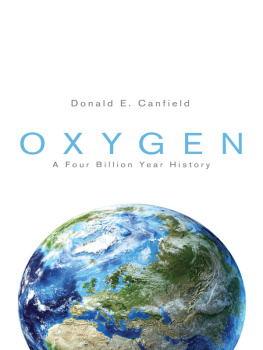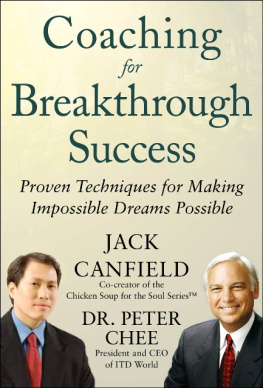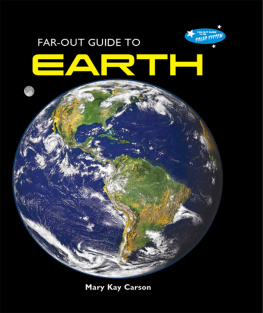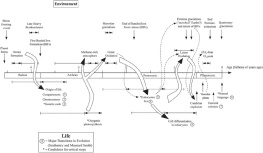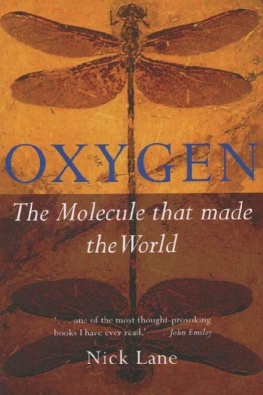
OXYGEN
Science Essentials
Books in the SCIENCE ESSENTIALS series bring cutting-edge science to a general audience. The series provides the foundation for a better understanding of the scientific and technical advances changing our world.
In each volume, a prominent scientistchosen by an advisory board of National Academy of Science membersconveys in clear prose the fundamental knowledge underlying a rapidly evolving field of scientific endeavor.
The Great Brain Debate: Nature or Nurture,
by John Dowling
Memory: The Key to Consciousness,
by Richard F. Thompson and Stephen Madigan
The Faces of Terrorism: Social and Psychological Dimensions,
by Neil J. Smelser
The Mystery of the Missing Antimatter,
by Helen R. Quinn and Yossi Nir
The Long Thaw: How Humans Are Changing the Next 100,000 Years of Earths Climate,
by David Archer
The Medea Hypothesis: Is Life on Earth Ultimately Self-Destructive?
by Peter Ward
How to Find a Habitable Planet,
by James Kasting
The Little Book of String Theory,
by Steven S. Gubser
Enhancing Evolution: The Ethical Case for Making Better People,
by John Harris
Natures Compass: The Mystery of Animal Navigation,
by James L. Gould and Carol Grant Gould
Oxygen: A Four Billion Year History,
by Donald Eugene Canfield
OXYGEN
A Four Billion Year History
Donald Eugene Canfield
Princeton University Press
Princeton and Oxford
Copyright 2014 by Princeton University Press
Requests for permission to reproduce material from this work should be sent to Permissions, Princeton University Press
Published by Princeton University Press, 41 William Street, Princeton, New Jersey 08540
In the United Kingdom: Princeton University Press, 6 Oxford Street, Woodstock, Oxfordshire OX20 1TW
press.princeton.edu
All Rights Reserved
Library of Congress Cataloging-in-Publication Data
Canfield, Donald E.
Oxygen : a four billion year history / Donald Eugene Canfield.
pages cm. (Science essentials)
Summary: The air we breathe is twenty-one percent oxygen, an amount higher than on any other known world. While we may take our air for granted, Earth was not always an oxygenated planet. How did it become this way? Oxygen is the most current account of the history of atmospheric oxygen on Earth Provided by publisher. ISBN 978-0-691-14502-0 (hardback)
1. Oxygen. I. Title.
QD181.O1.C36 2014
551.51'12dc23 2013024610
British Library Cataloging-in-Publication Data is available
This book has been composed in Baskerville
Printed on acid-free paper.
Printed in the United States of America
1 3 5 7 9 10 8 6 4 2
CONTENTS
This book is dedicated to the memory of my father, Eugene David Canfield Jr., my guiding light.
ACKNOWLEDGMENTS
I must begin by acknowledging all of my good friends and colleagues who have worked hard in various ways to help unravel the dynamics of oxygen cycling on both the modern and the ancient Earth. This book is as much their story as it is mine. You will meet most of these people as the story unfolds, but I would like to highlight the inspiration of Bob Berner, Tim Lenton, Rob Raiswell, John Hayes, Lee Kump, Penny Chisholm, Ed Delong, Nick Butterfield, Jorge Sarmiento, Osvaldo Ulloa, Bo Thamdrup, Bo Barker Jrgensen, Andrey Bekker, Bob Blankenship, Roger Buick, Fritz Widdel, Niels Peter Revsbech, Martin Brasier, Jake Waldbauer, Jochen Brochs, Birger Rasmussen, Bill Schopf, Paul Falkowski, Bill Martin, Dave Des Marais, John Waterbury, Sean Crowe, Simon Poulton, CarriAyne Jones, Jim Kasting, Minik Rosing, Christian Bjerrum, Tim Lyons, Ariel Anbar, Stefan Bengtson, Andy Knoll, Roger Summons, Dave Johnston, James Farquhar, Nick Lane, Jim Gehling, Guy Narbonne, Tais Dahl, Daniel Mills, and Emma Hammarlund. I also wish to acknowledge the constant stimulation of the NordCEE group spread between and the University of Southern Denmark, the University of Copenhagen, and the Swedish Museum of Natural History. Many of the heroes of this story are no longer with us, but their inspiration continues, and these people include Dick Holland, Vladimir Vernadsky, Preston Cloud, Karl Turekian, and Bob Garrels. This book progressed in fits and starts, but I am especially grateful to the Division of Geological and Planetary Sciences at Caltech, and especially to my host Woody Fischer for arranging a Moore Fellowship to support two months of productive bliss, together with my family and away from the distractions of home. During the course of writing, I received valuable feedback on individual chapters from Bob Blankenship, Minik Rosing, Bob Berner, Tais Dahl, Emma Hammarlund and Guy Narbonne. I am grateful to Bill Martin and to Lee Kump who provided feedback on the whole text, and especially to Raymond Cox, Tim Lyons, and my copyeditor Sheila Ann Dean, whose extensive comments and edits greatly improved the manuscript. I wish to acknowledge both the patience and extensive feedback from my editor, Alison Kalett at Princeton University Press. Images, or the data to generate them, were kindly provided by Minik Rosing, Emma Hammarlund, James Farquhar, Matt Saltzman, Niels Peter Revsbech, Ken Williford, Martin van Kranendonk, Bruce Wilkenson, Bill Schopf, Tais Dahl, Eric Condliffe, Bo Thamdrup, Jakob Zopfi, and Lawrence David. Finally, I wish to acknowledge the generous support from my funding sources including the Danish National Research Foundation (Danmarks Grundforskningsfond), the European Research Council (Oxygen Grant), and the Agouron Institute.
PREFACE
If you are like me, you probably dont think a whole lot about the air you breathe unless, for some reason, it smells bad. However, our air is quite special. It contains 21% oxygen, and ours is the only world we know of (at least so far) with such elevated amounts. This is good for us because we are large animals and we need lots of oxygen to live. So also do our furry friends, cats and dogs, as well as the cows, chickens, sheep, pigs, and other animals on which we base much of our diet. Oxygen burns the fuel that heats our homes, and allows the warm glow of a campfire on a crisp autumn evening. In short, oxygen is a signature feature of Earth; the high levels in our atmosphere define the outlines of our existence, as they also generally define the nature of animal life on Earth.
Given the importance of Earths oxygen, we might contemplate a series of questions. So, for example, where does all this oxygen come from? Why are the levels so high? What controls the atmospheric concentrations of this important gas? We might further wonder if oxygen concentrations have always been so high and if not, how they have changed through time, and if so, why. Finally, given the importance of oxygen to the present biosphere, is there any indication that the history of atmospheric oxygen levels could be coupled in any way to the history of biological evolution on Earth?
This book is about the history of atmospheric oxygen on Earth, and I will attempt to answer these questions in the following pages. One of the inevitable conclusions, which I offer in advance, is that oxygen control is a global phenomenon, and oxygen persists in high levels because of a fascinating interplay between biological and geological processes. The nature of this interplay has changed through time, resulting in a rich history of oxygen evolution; this history, as well as we understand it, will be revealed in the pages to follow.
Next page
